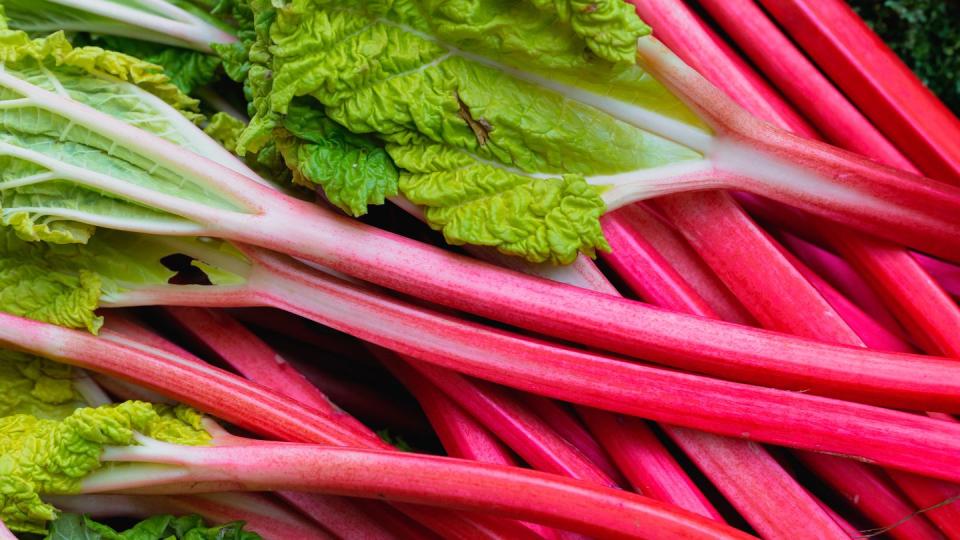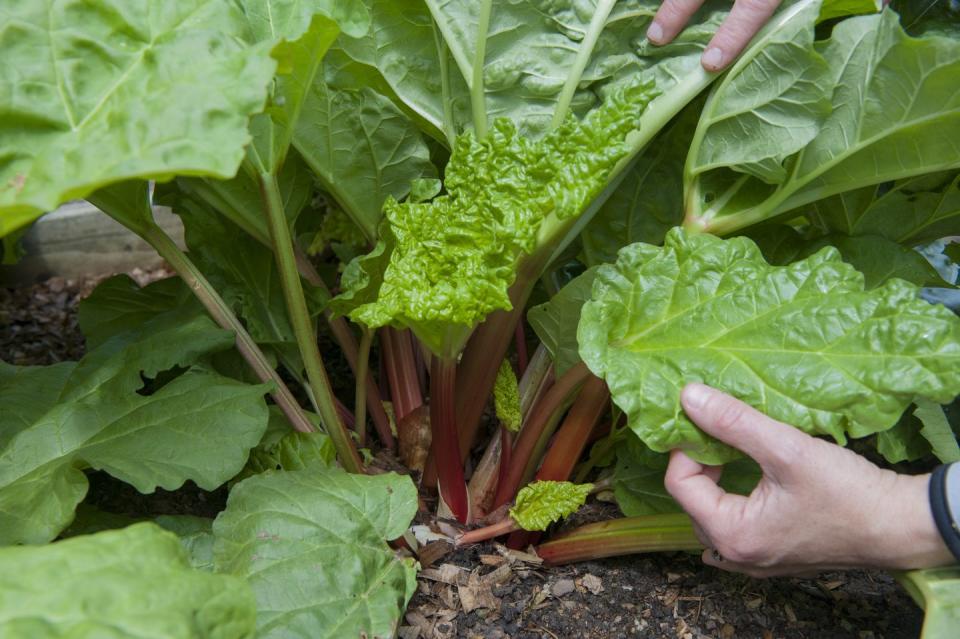Beware: Your Rhubarb Can Potentially Make You Sick

Forget Punxsutawney Phil and the first bloom of flowers; the real indicator of spring is the influx of seasonal produce. The second daylight savings time starts, we’re putting peas, asparagus, and artichokes in just about everything. But no spring vegetable is more striking than vibrant, pink stalks of rhubarb.
If you didn’t know already, rhubarb is actually considered a vegetable, even though it's traditionally used in sweet applications. Raw rhubarb is crisp and super tart, which is why you’ll often see it paired with sweeter fruits like strawberries. And as the stalks cook in cakes, pies, and preserves, they become delightfully soft and jammy.
Rhubarb is truly a spring staple, but it also comes with a pretty significant warning label. You’ve likely heard warnings about rhubarb being toxic, but people eat it all the time, so what exactly is dangerous about it? Does that mean we should scale back on the strawberry rhubarb pie? We consulted food scientist and professor at Drexel University, Rosemary Trout, to unpack everything you need to know about rhubarb.
And to answer the question on everyone’s mind: Yes, some, but not all, parts of rhubarb are indeed poisonous.

The stalks of rhubarb that you find at the grocery store are entirely safe to eat—but the leaves are toxic. “The leaves are very high in oxalates, so you should not consume the inedible and poisonous leaves,” Trout says. "Oxalates are anti-nutrients because they bind minerals, reducing mineral bioavailability. The insoluble oxalates can form crystals associated with kidney stones.”
According to Mount Sinai Hospital, the symptoms of poisoning from rhubarb leaves can range from stomach pain to vomiting to even seizures. While some deaths have been reported in the past, Mount Sinai says that instances are very rare. They advise that anyone who comes in contact with rhubarb leaves should immediately contact their local poison control center.
Trout clarifies that the oxalates that make rhubarb leaves toxic can also be found in the stalks (or petioles, if we want to get technical). But the concentration isn’t high enough to pose a health risk.
Rhubarb isn’t the only vegetable with toxic leaves. In fact, the potatoes we see at the grocery store are edible, but every other part of the plant is toxic. So if your spuds start growing lots of sprouts, throw them out!
Thankfully, most of the rhubarb you can find at the grocery store or farmers' market has already been stripped of their leaves. So you can take full advantage of rhubarb season and stay safe at the same time. Happy spring, everyone!
You Might Also Like

 Yahoo Sports
Yahoo Sports 